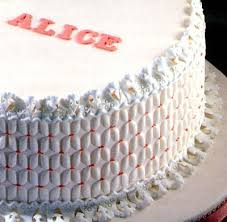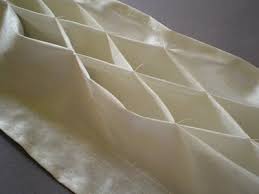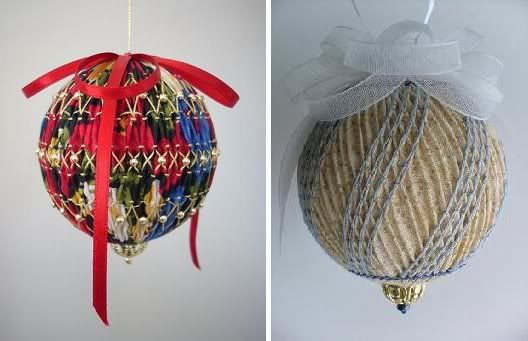A-Z of Smocking  $29.95
$29.95 
experimenting with casting flounces


This was an attempt at casting flounces. I can't say that I am pleased with the result. Key qualities such as the original lightness and gentle layering have been lost. I am going to move away from this approach for the meantime, and begin looking into ways of solidifying my fabric models. A combination of a stiff or stiffened material together with structural inserts may offer a better approach and be more in line with the logic of the corset/petticoat.
 Opposite-Edge Gathering takes a length of fabric and makes its area smaller by crushing it onto a pulled thread stitching. The freed fabric collects into variable directed folds.
Opposite-Edge Gathering takes a length of fabric and makes its area smaller by crushing it onto a pulled thread stitching. The freed fabric collects into variable directed folds.  Shirring configures fabric with bands of rolling folds released between rows of gathering, the pinched, puckery, stitching lines form a multidirectional pattern. with a network of gathered stitching seperated by zones of fabric crowded with variable folds, shirring shrinks the original fabric while adding substance to the fabric it acts on.
Shirring configures fabric with bands of rolling folds released between rows of gathering, the pinched, puckery, stitching lines form a multidirectional pattern. with a network of gathered stitching seperated by zones of fabric crowded with variable folds, shirring shrinks the original fabric while adding substance to the fabric it acts on.Meander Shirring is improvised. The design wanders freely.

Cross-Shirring produces pockets of puffy, gathered fabric that spring up between a grid of gathered stitching. Fabric is gathered in two directions.
 Pattern Shirring is produced when a design is followed.
Pattern Shirring is produced when a design is followed.Here a circular pattern was used.
 Smocking secures and adjusts the folds of a finely pleated field of fabric. Smocked fabric aquires the same thickness as its pleats and it loses flexibility across the pleating.
Smocking secures and adjusts the folds of a finely pleated field of fabric. Smocked fabric aquires the same thickness as its pleats and it loses flexibility across the pleating.
(二)Description
This section is from the book "Educational Needlecraft", by Margaret Swanson And Ann MacBeth. Also available from Amazon: Educational Needlecraft.
Smocking
This is a form of decoration best suited to thin woollens, cottons, silk or linen, and is chiefly used as a means of finishing children's dresses and shirts where much fulness is desired. Carefully gather up the portion of the garment to be smocked with rows of very regular gauging at intervals of 1/2 to 3/4 of an inch, and fasten the ends of the gauging threads to pins after drawing them to the required width. Diagram 146 shows some of the various stitches commonly used in smocking. The first is a row of outline stitch, taking up two folds of the material at a time. Care must be taken not to make this stitching too tight. Next comes Honeycomb Stitch where two folds of the material are caught together by two small firm stitches, and the needle is then directed along underneath one of the folds about half an inch, brought out there, and this fold and the next in succession caught together in like manner to the first pair, the folds have thus a zigzag direction given to them between the upper and lower rows of stitches. Many rows of this stitchery give a honeycombed appearance to the material, but great care is necessary to keep the rows of stitches perfectly even.


Feather stitching and chain stitching may also be employed, each stitch taking up one single fold of the gauging. When finished the first gauging threads may be withdrawn.
Continue to:
- prev: Faggot Stitching
- Table of Contents
- next: Satin Stitch
Tags
lessons, needlecraft, hemming, pleating, sewing, stitching, seams, binding, darning, bodice, tucking, piping, gussets, finishings, needles, threads, applique
----------------技法---------------------- 
Smocking (Fig. 254) is an ornamental way of arranging and holding fulness in various parts of garments, in place. The material to be smocked must be gathered very regularly and drawn up to about one-fourth the measurement when plain, and then on the surface of the gathers ornamental stitches are worked. In order to make the gathering very regular, the material should first bemarked or "charted" on the wrong side by horizontal rows of dots, the space between the dots, usually from one-eighth to three-eighth inch, to be governed by the weight of material and the amount to be gathered (Fig. 252). The distance between the horizontal rows of dots, varies from three-eighth to three-quarter inch. The dots may be marked with pencil, using a ruler to measure and guide, or transfer patterns may be purchased and used for this purpose. For the gathering, use strong thread, No. 40 to No. 60, according to the weight of the material; work on the wrong side, take one little back-stitch at the first dot to prevent knot pulling through material later on, then gather by lifting the material between dots on the needle and passing over just a few threads of the material on each dot. When all lines of gathering are in, draw the material up to about one-quarter the original width and fasten by winding each thread on a pin or by tying two threads together. Next turn to the right side and pull the gathers into place so that each stitch full comes up evenly in place, the same on each row of gathering, thus laying the fulness in even lines throughout (Fig. 253).

Fig. 252. - A, charting material; B, gathering material.

Fig. 253. - Smocking - Method of making stitches; upper row, outline stitch; second row, cable stitch; third row, wave stitch; lower row, diamond stitch.
Now we are ready for the decorative stitches; use any embroidery cotton or silk suited to the material, same or contrasting color.
--------------------------------------community(社群)---------------------------------------------------------------------
While we were learning the traditional smocking, we also learned a quick form of smocking, no doubt developed by resourceful pioneers short on supplies. Check it out:
 Canadian (aka North American) smocking is a very quick and easy way to elegantly gather fabric. Use it in home dec projects, accessories, bags, or clothing.
Canadian (aka North American) smocking is a very quick and easy way to elegantly gather fabric. Use it in home dec projects, accessories, bags, or clothing.
You can find Canadian smocking in the SavvySeams Tudor Rose Purse pattern. You can find some examples of beautiful costumes that use Canadian smocking at the Padawan’s Guide to Star Wars Prequel Costuming. Check out Padme’s nightdress and robe in particular.
Learn North American smocking here …
-------------------------------------------------------網站-----------------------------------------------------------------
Sew Creative
Sutter Place Mall
5221 South 48th, Suite 17
Lincoln NE 68516
402-489-6262
1-800-475-SEWS
Westwood Plaza
2730 South 123rd Court
Omaha NE 68144
402-334-0121
Store Hours:
Monday-Thursday 10-6
Friday & Saturday 10-5
Sunday Closed
- ----------------------------------------------應用-------------------------------------------------
-

400 x 390 - 38k - jpg - www.sugarcraft.com/.../ Smockingembosser.jpg
圖片受版權保護。
-

400 x 300 - 17k - jpg - 3.bp.blogspot.com/ _hb73Z6jnzik/SdYEh0lzN1I/AA...
圖片受版權保護。
下列圖片位於:karenruane.blogspot.com/ 2009/04/silk.html
Some thoughts on Smocked Ornaments

In December 2004 some acquaintances were looking for information on how to make smocked ball ornaments. When I couldn't find instructions online I decided to write some instructions for how I make these ornaments, complete with step by step pictures. I also made a few balls and drew the patterns for them. It had been many years since I had made these ornaments and my experiments were not very polished. Nonetheless I was encouraged to "publish" my instructions and patterns on the internet. The result is my website www.freewebs.com/bonimoo
My site doesn't have general smocking instructions. The following page does,
http://tipnut.com/smocking/
Also note that larger images of all the pictures on my site can be found in my smocked ornaments photo album.
I think the most confusing part of my instructions is where I discuss how wide to make the fabric strip. Let's see if I can simplify it. For my experiments I mostly used quilting cotton and balls that had a circumference of 7 1/4 to 7 3/4 inches. On that size I liked 96 pleats (or about 12.5 pleats per inch of circumference) best. My pleats were 3/16 inches wide so that made for a length of 96 x 3/16 inch (or 18 inches) plus seam allowances. One could use 12.5 pleats per inch on a larger ball, but gathering the top and bottom into a small enough circle to cover with a small button or bead cap could be challenging. Of course, a lot depends on the thickness of the fabric and, as you will see below, there are creative ways to finish the top and bottom of the ornament that don't require such a small circle.
After I completed the website I starting collecting sources of information about smocked ornaments.
Barbara Meger sells kits online. (Check out the photo gallery too.)
There are some beaded ornaments by Mimi Ahern in the book "Creative Smocking" by Chris Rankin. (They are not on the cover of every edition.}
Dianne Durand's "Complete Book of Smocking Techniques and Projects" has the instructions and chart for this ball ornament.
After I constructed my website I found the following instructions online:
Smocked ball.
Another smocked ball
Smocked Heart.
And a smocking guild has posted six Christmas ornament designs by their members.
The Spring 2007 issue of "A Needle Pulling Thread" magazine had these lovely smocked eggs.




 留言列表
留言列表


